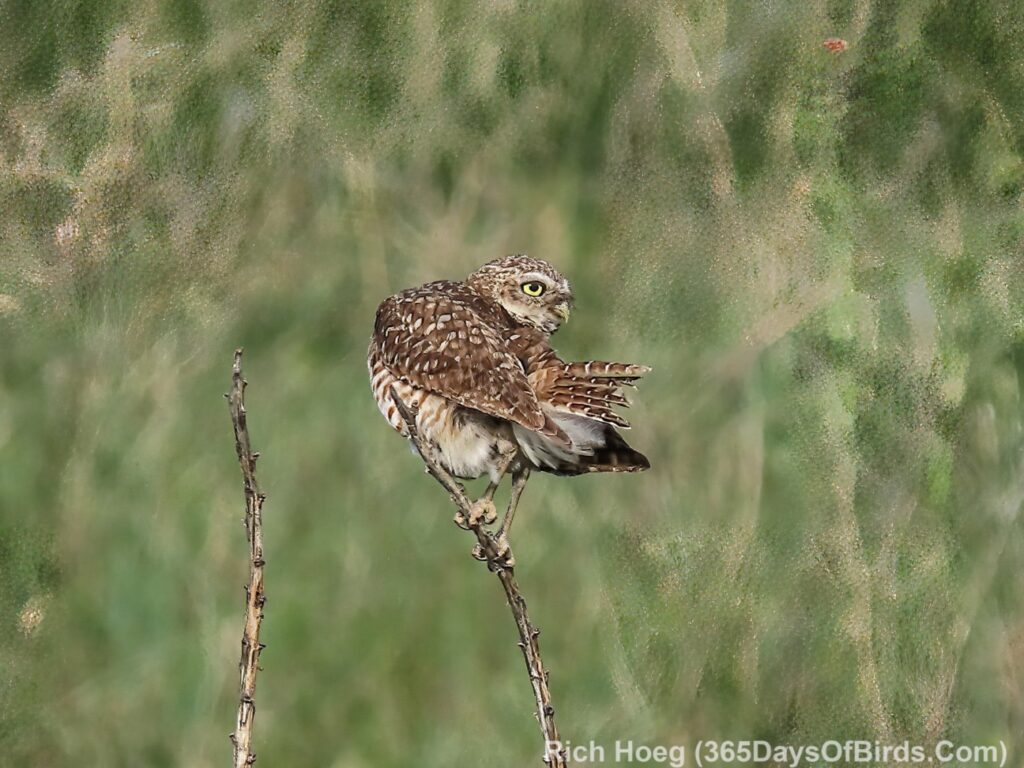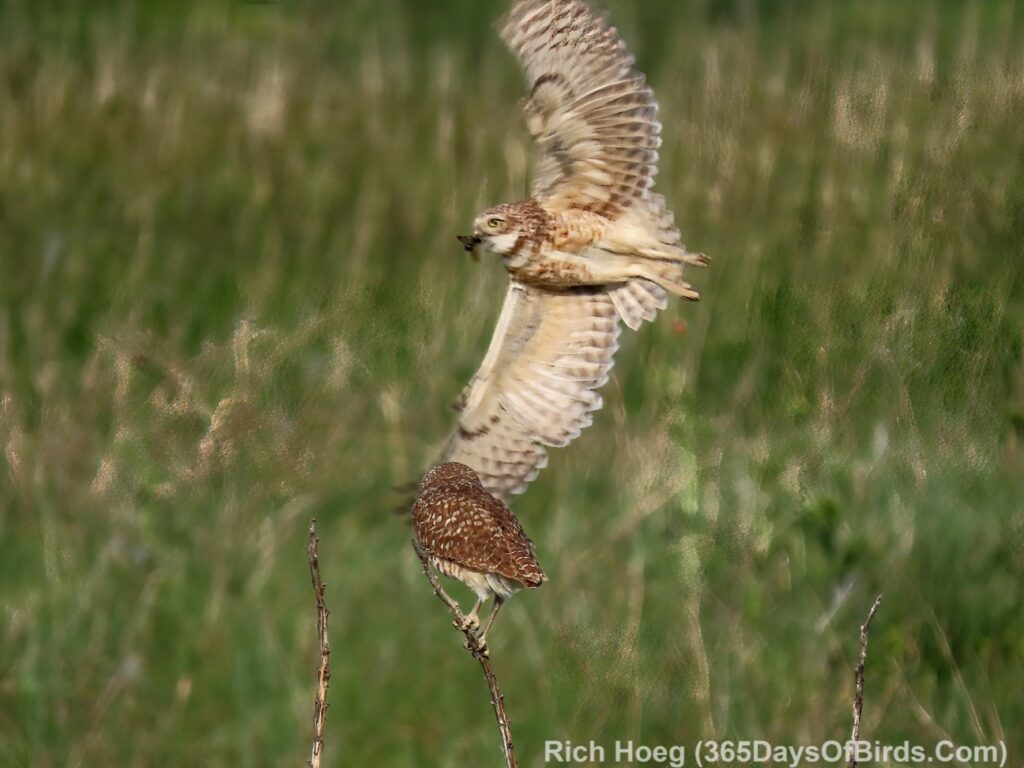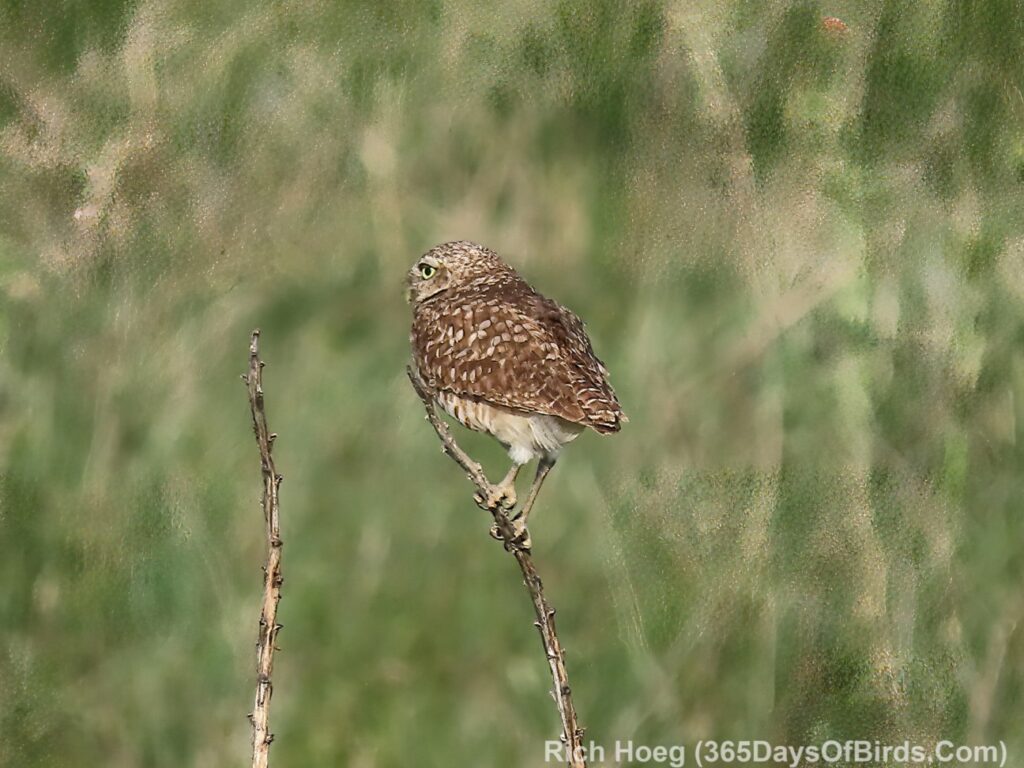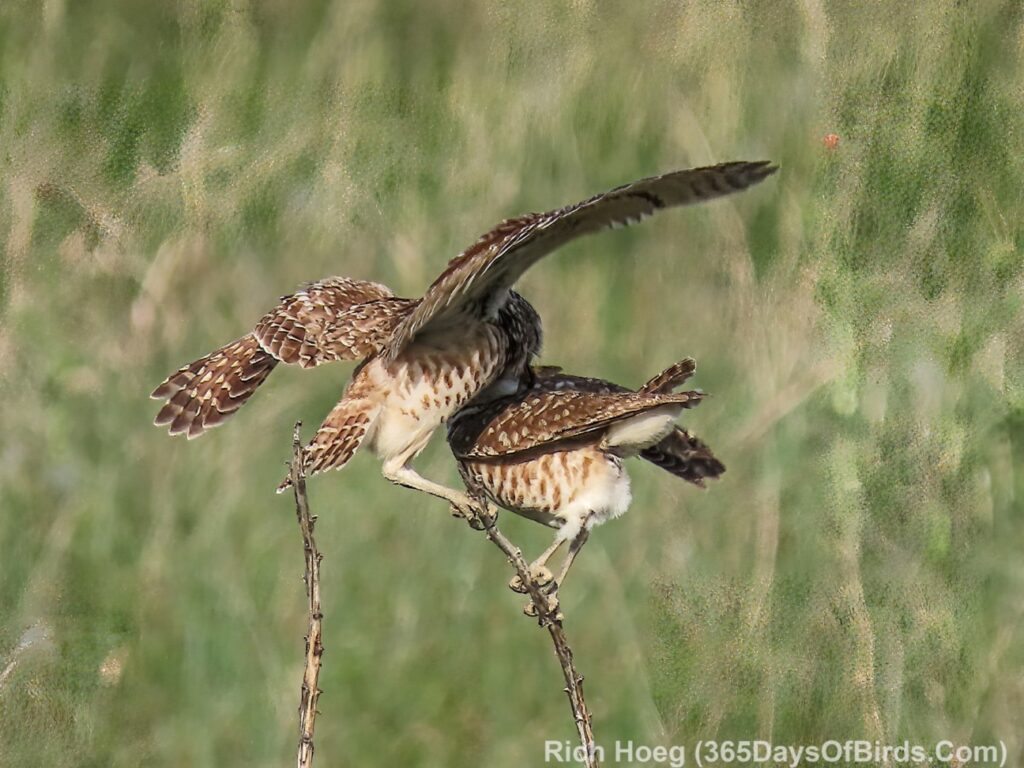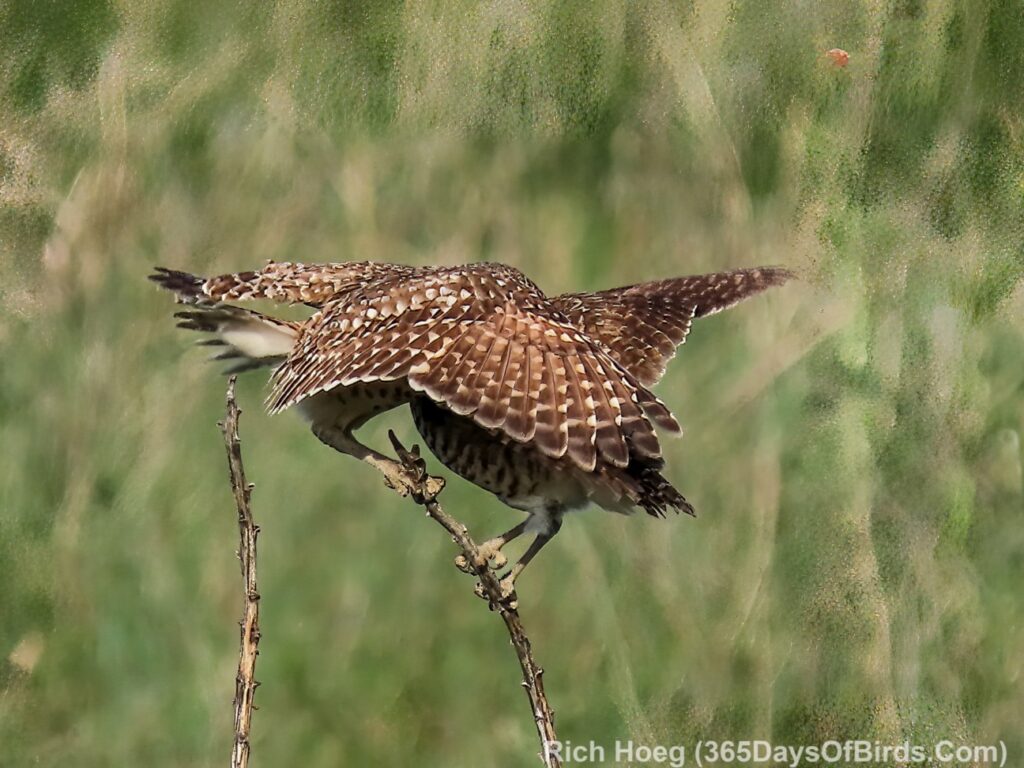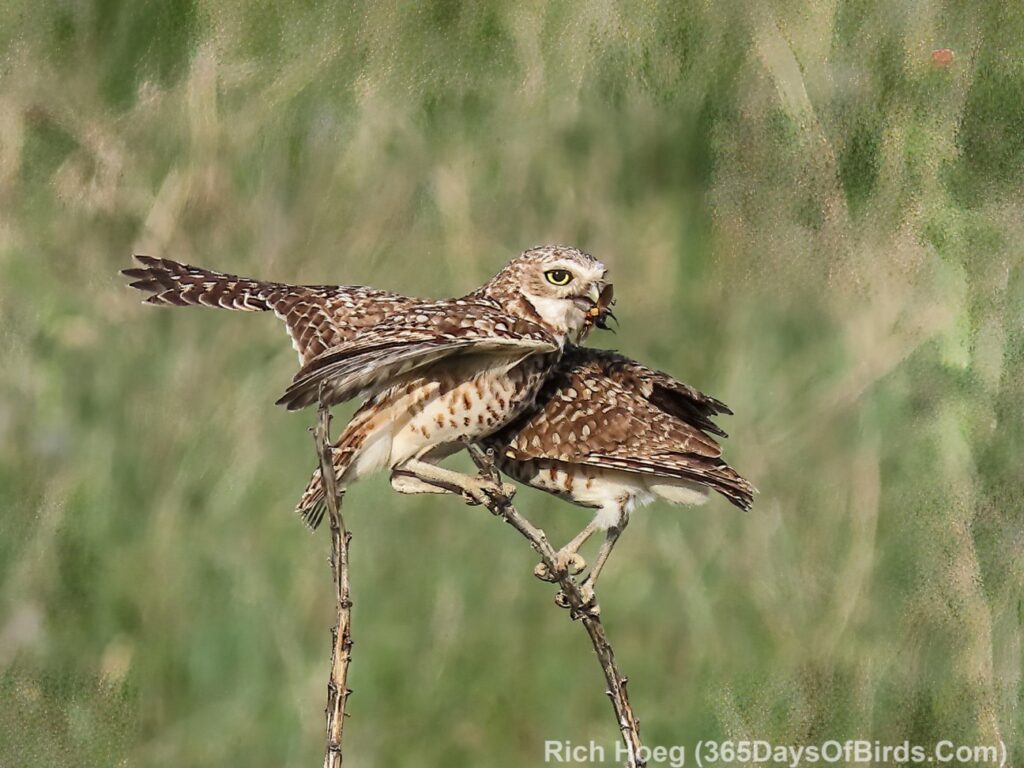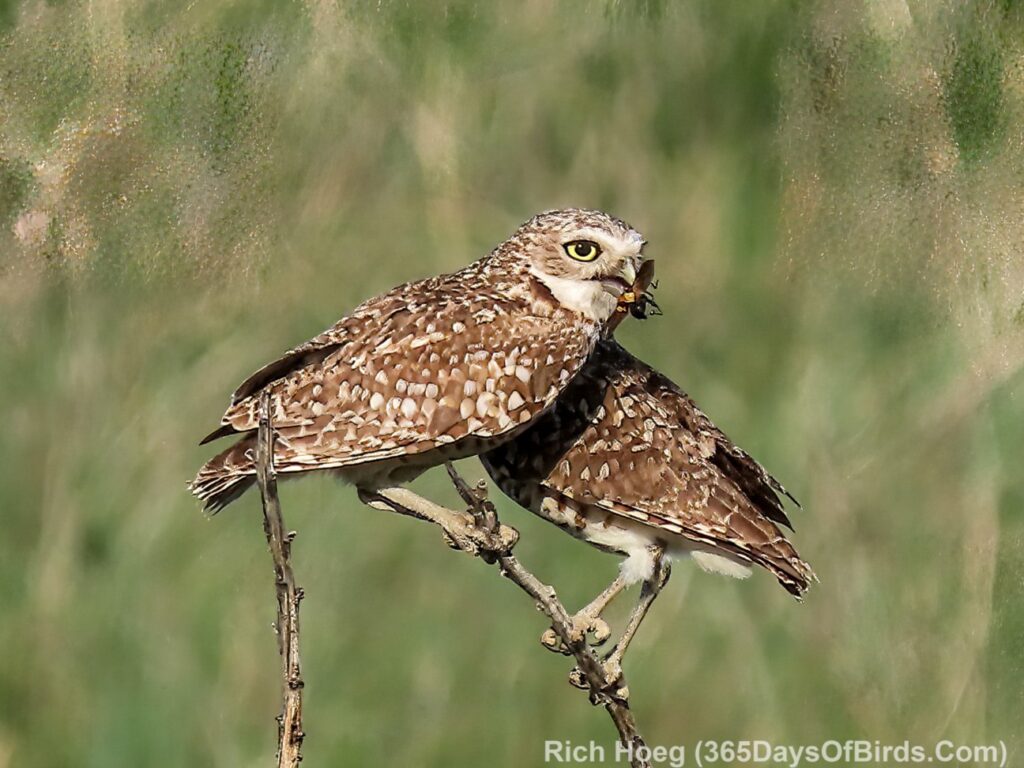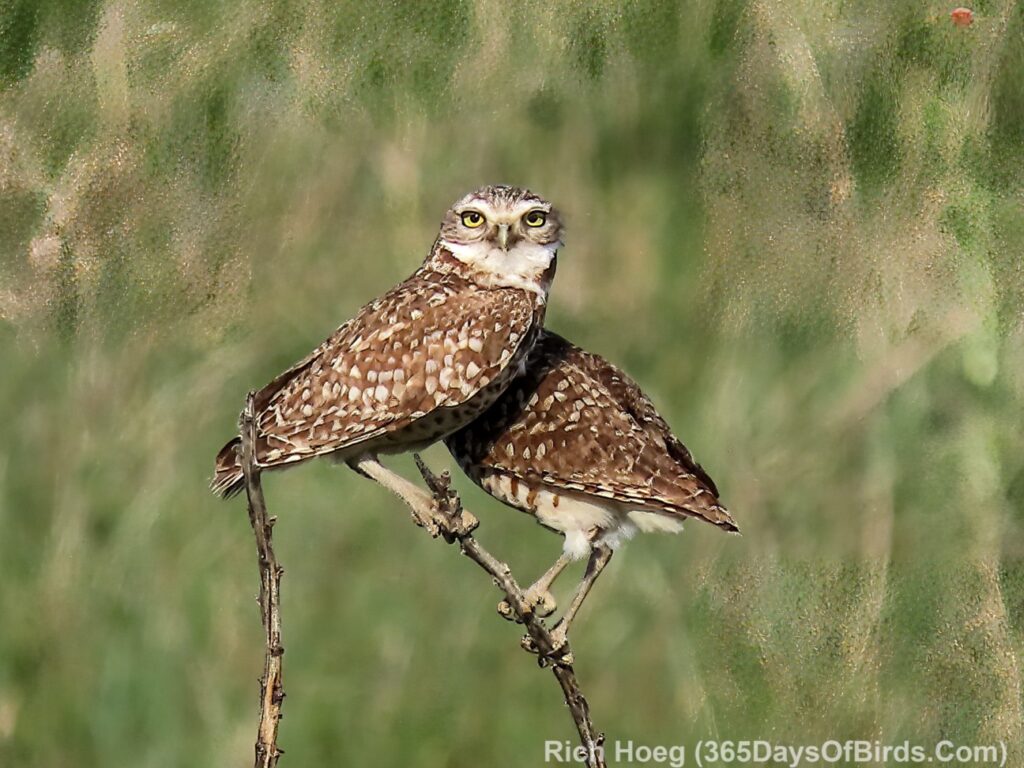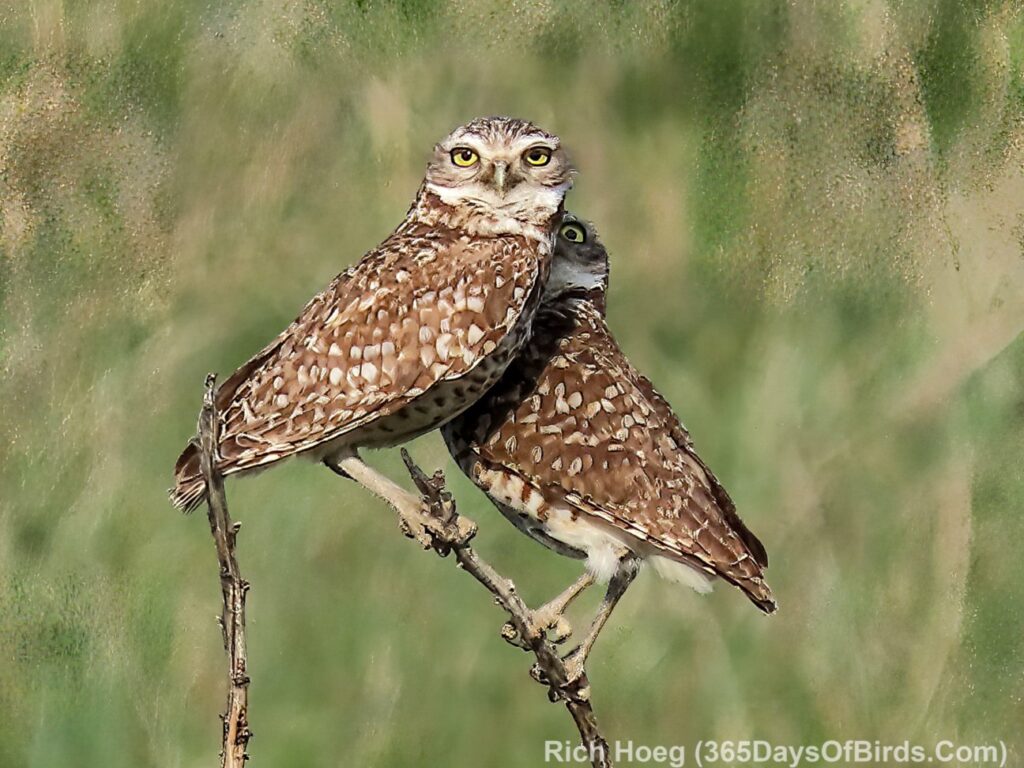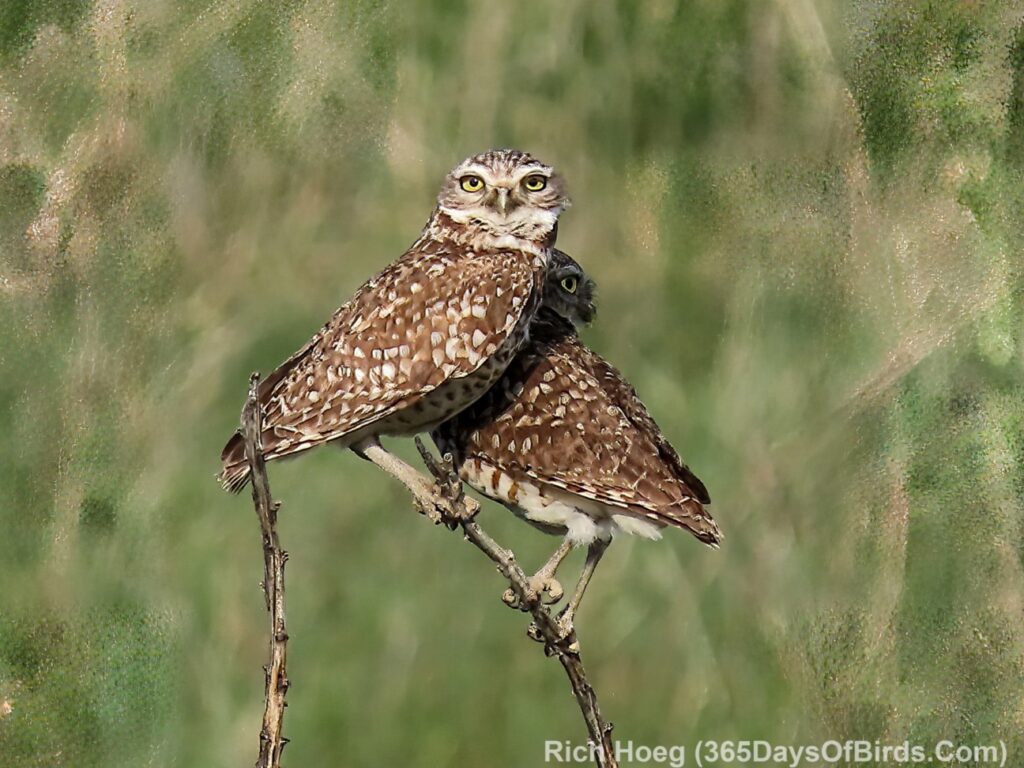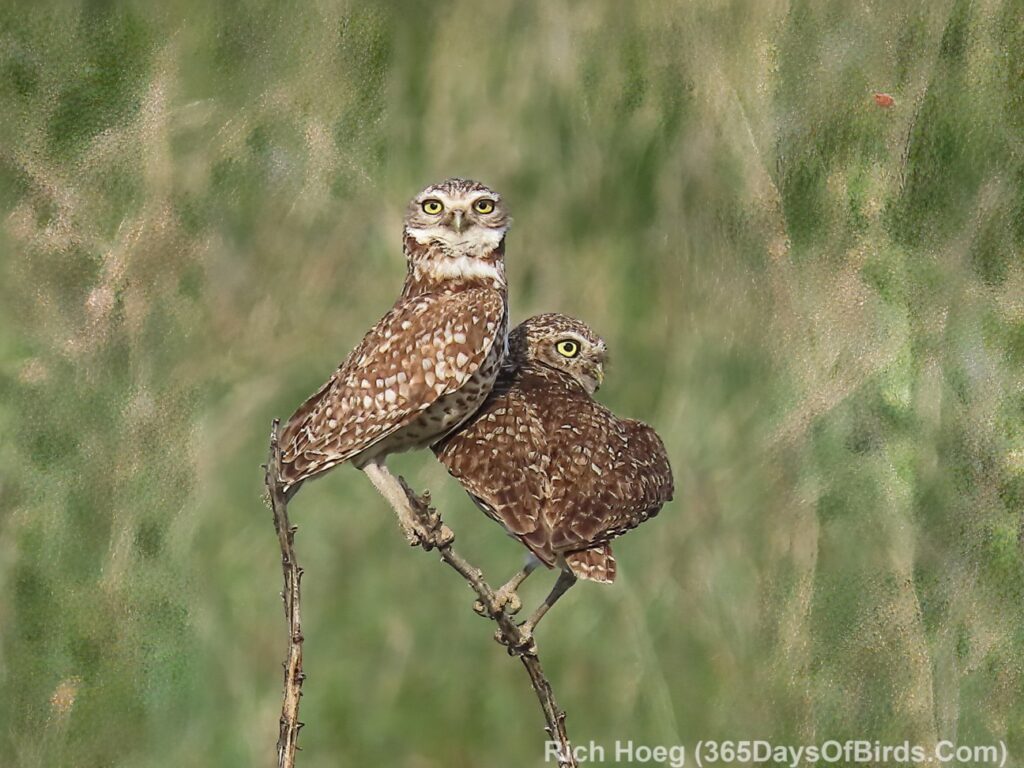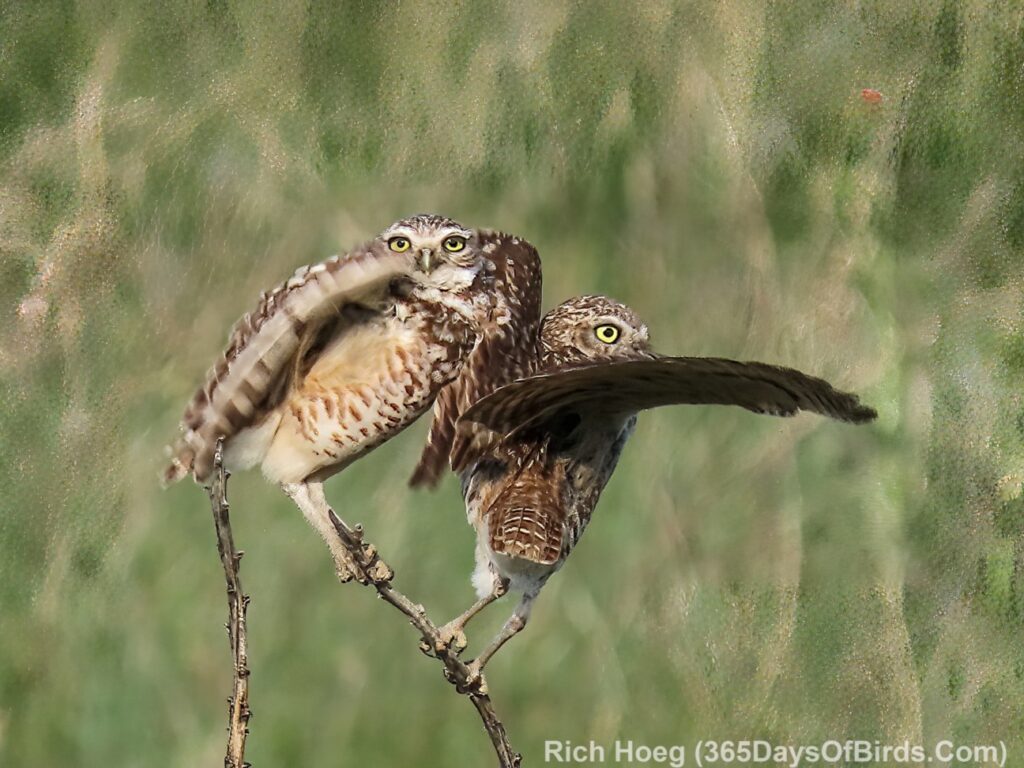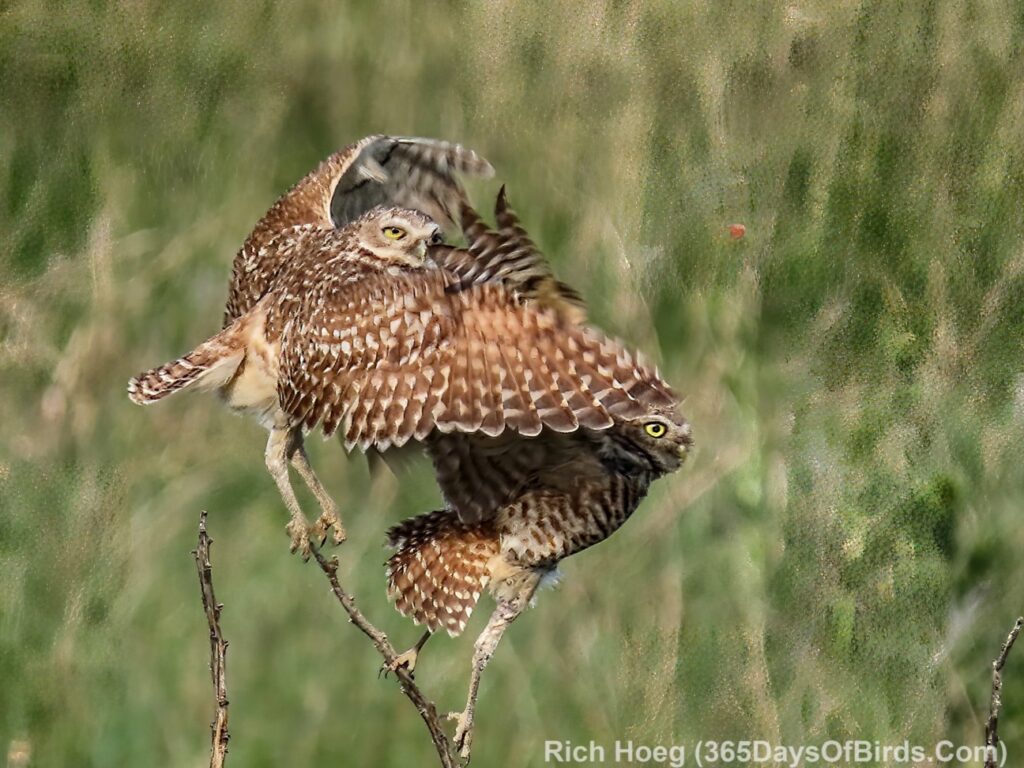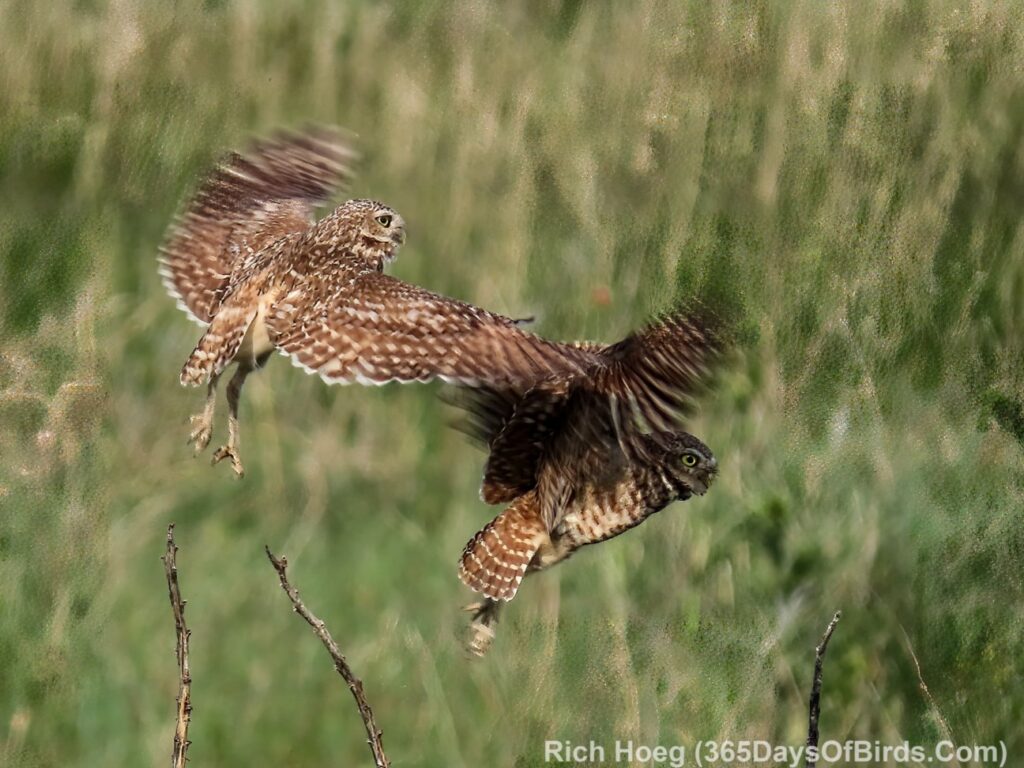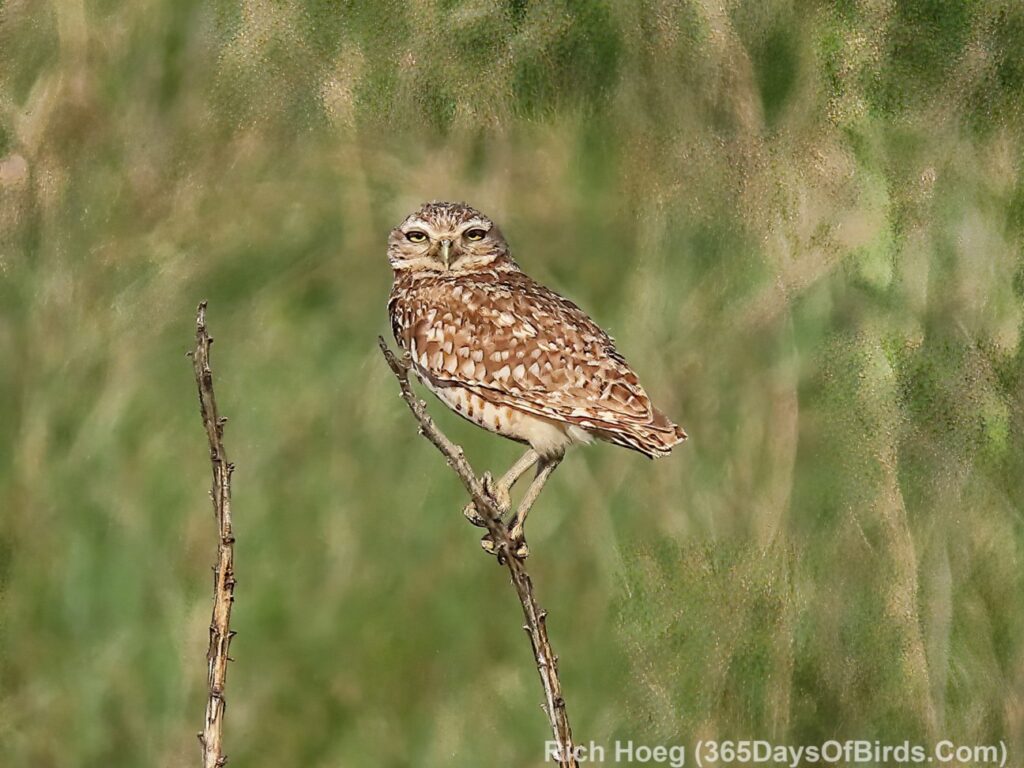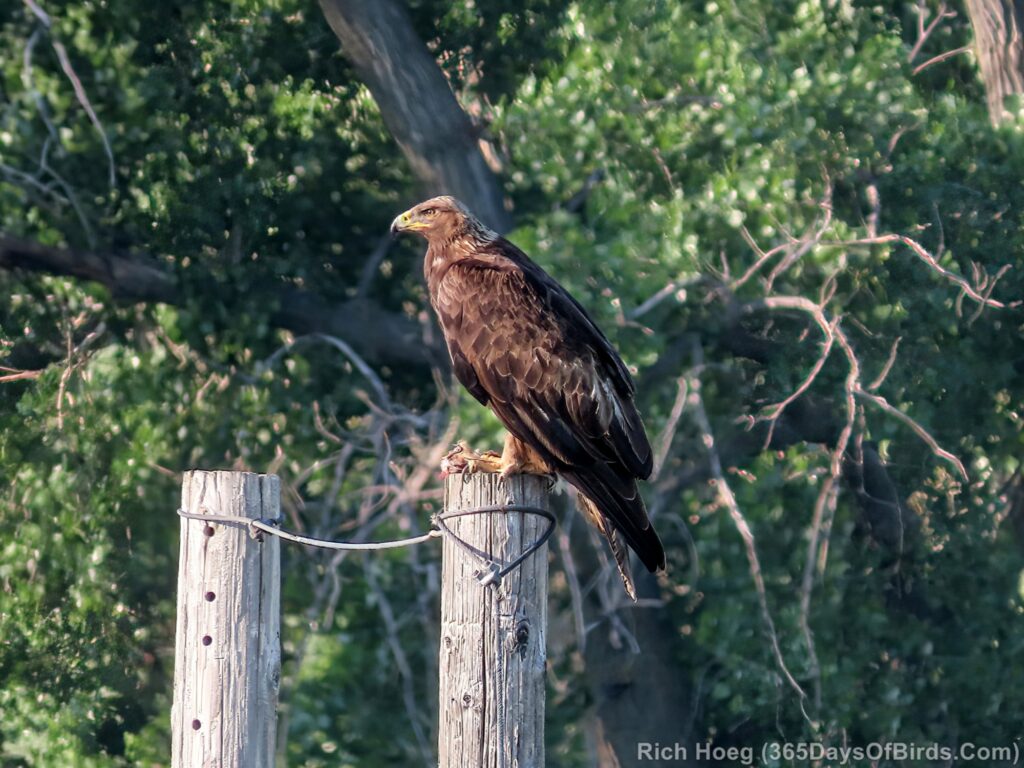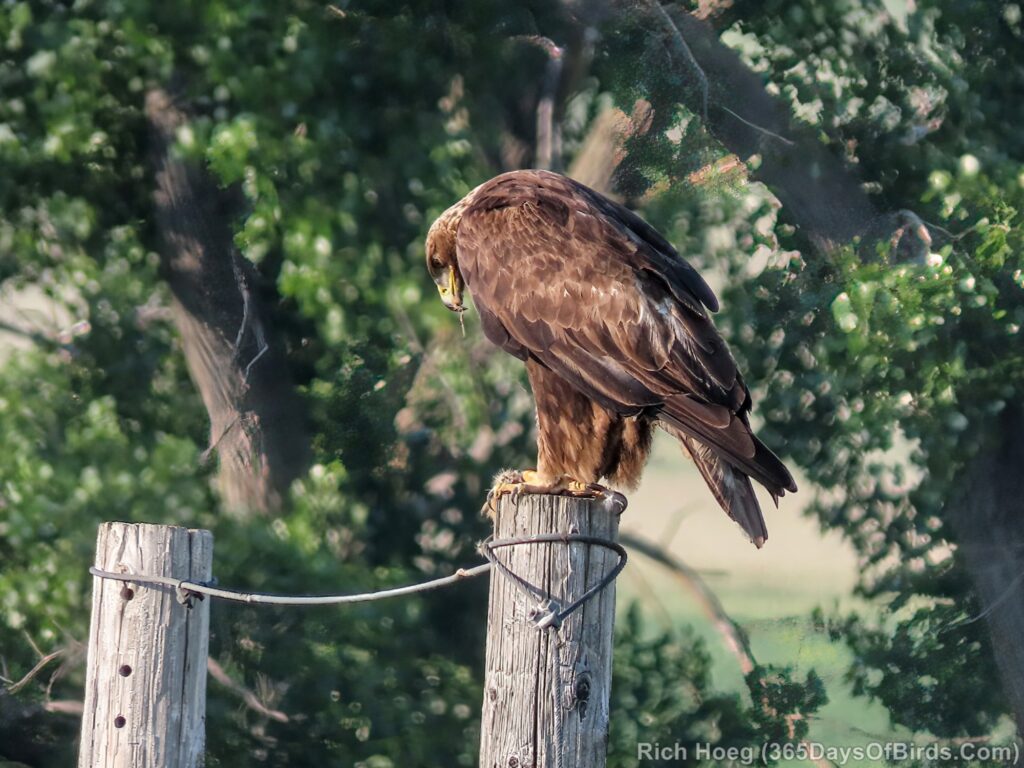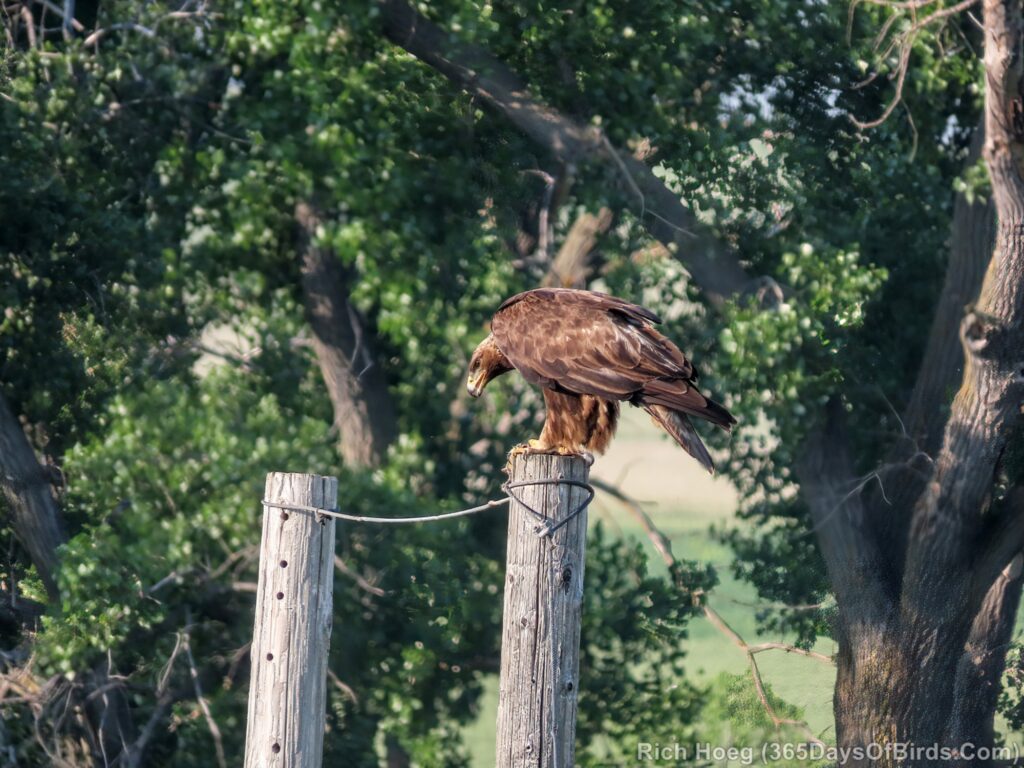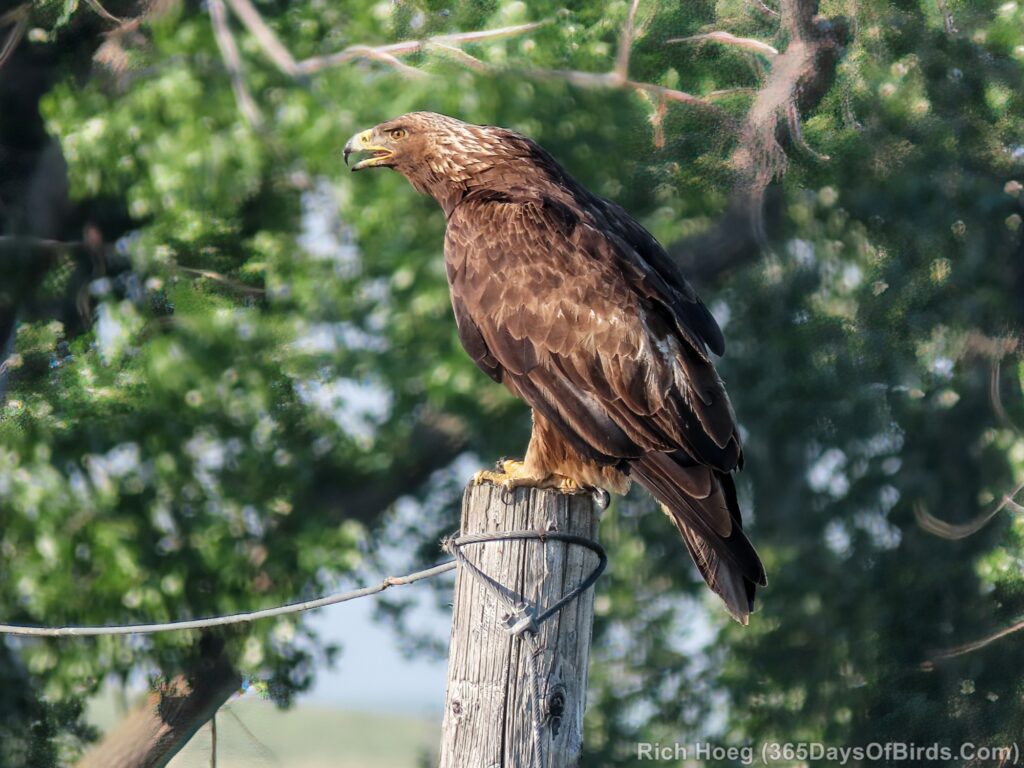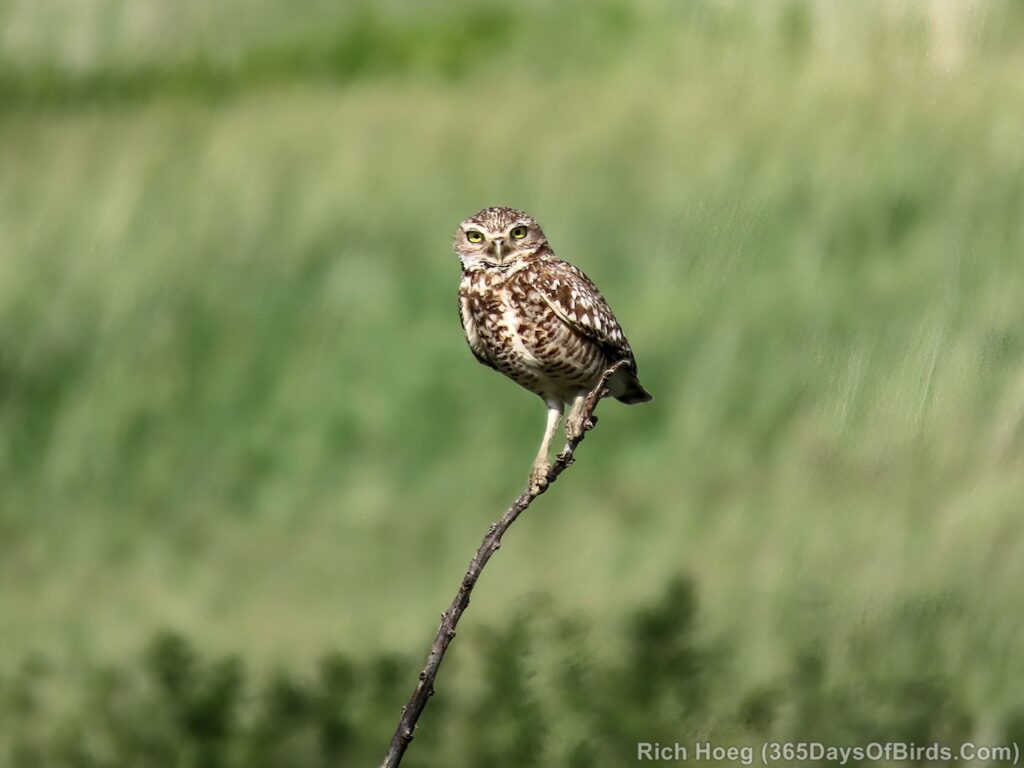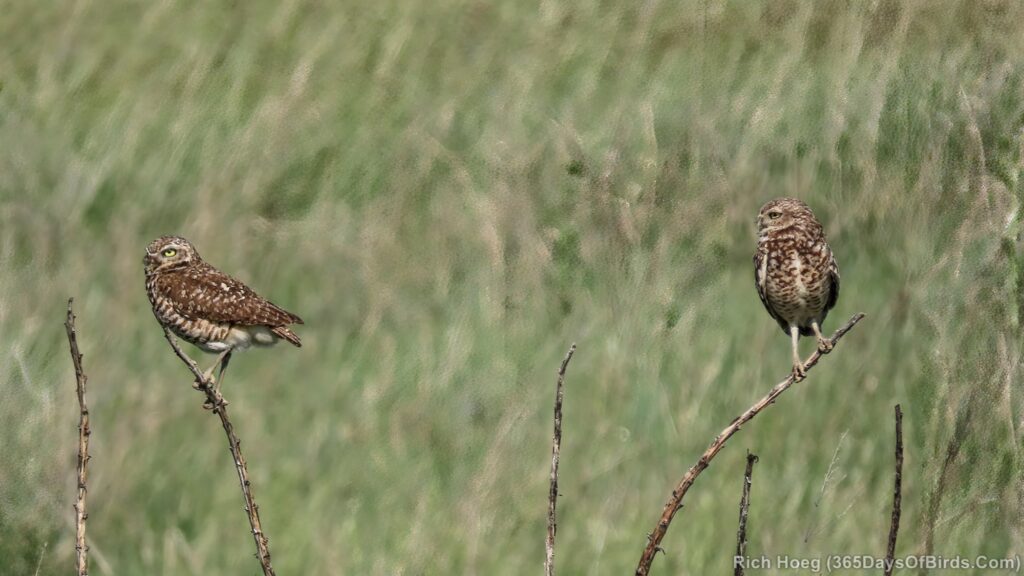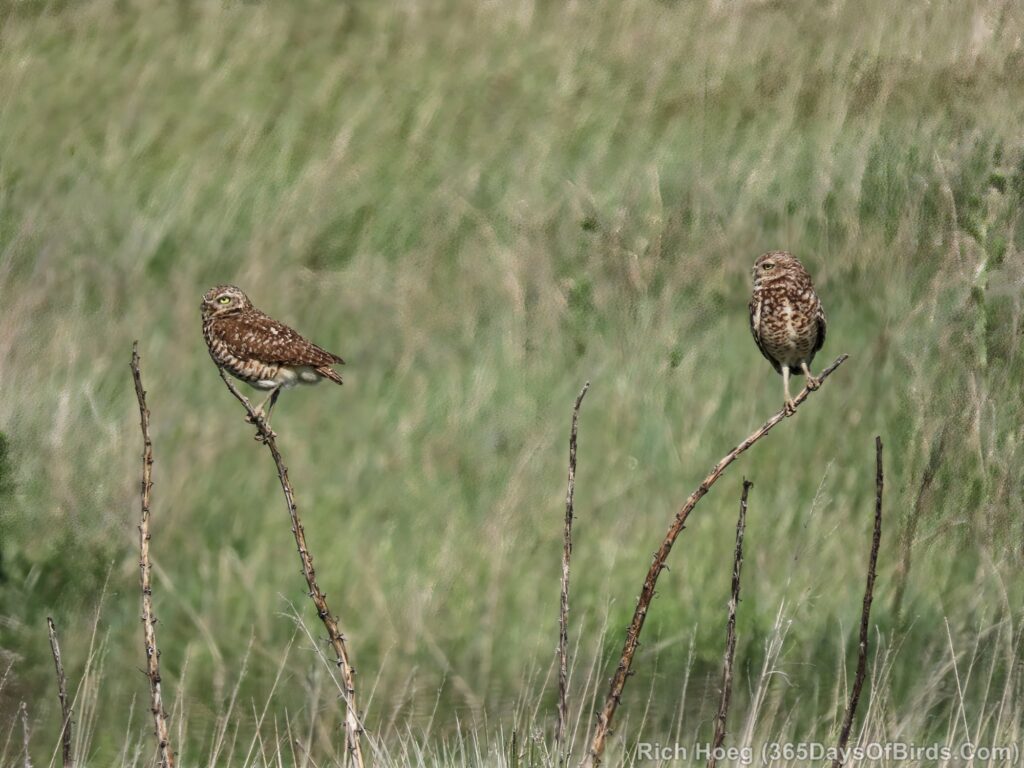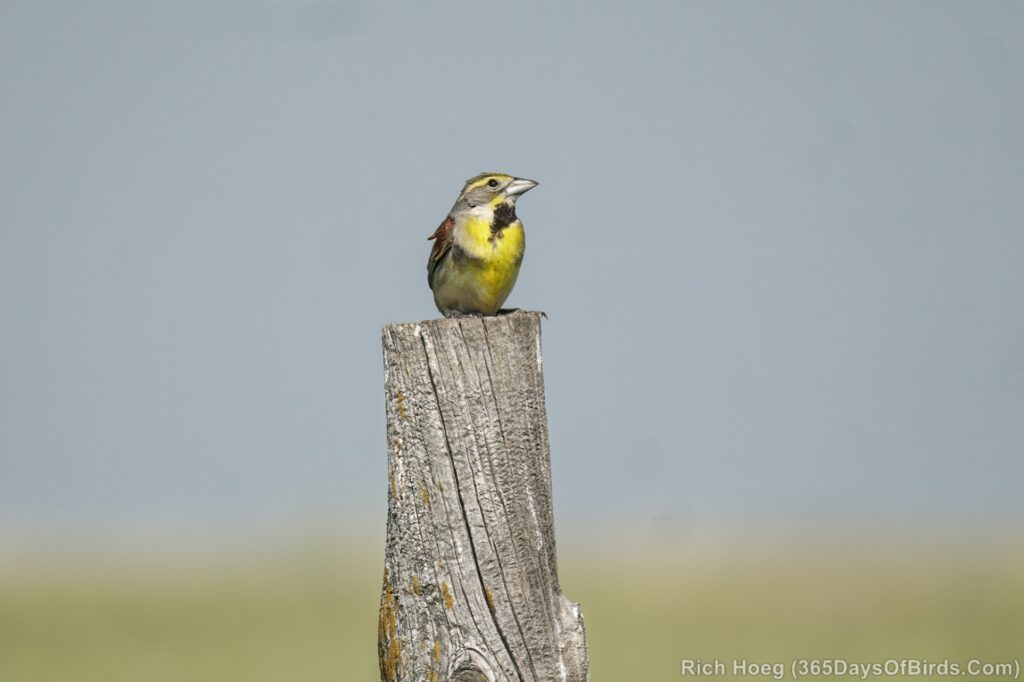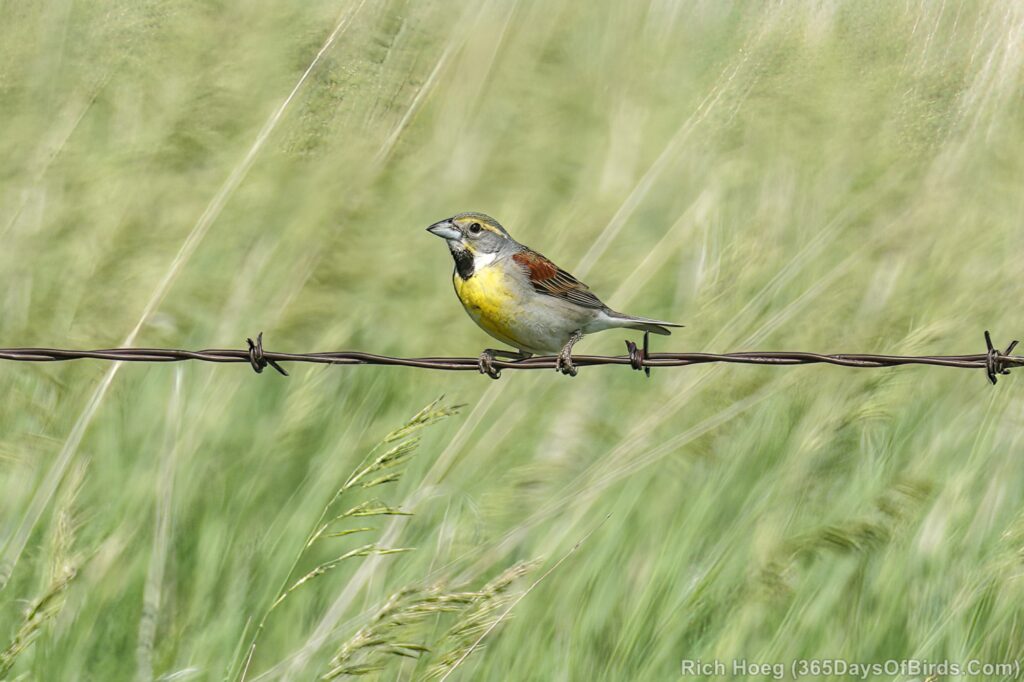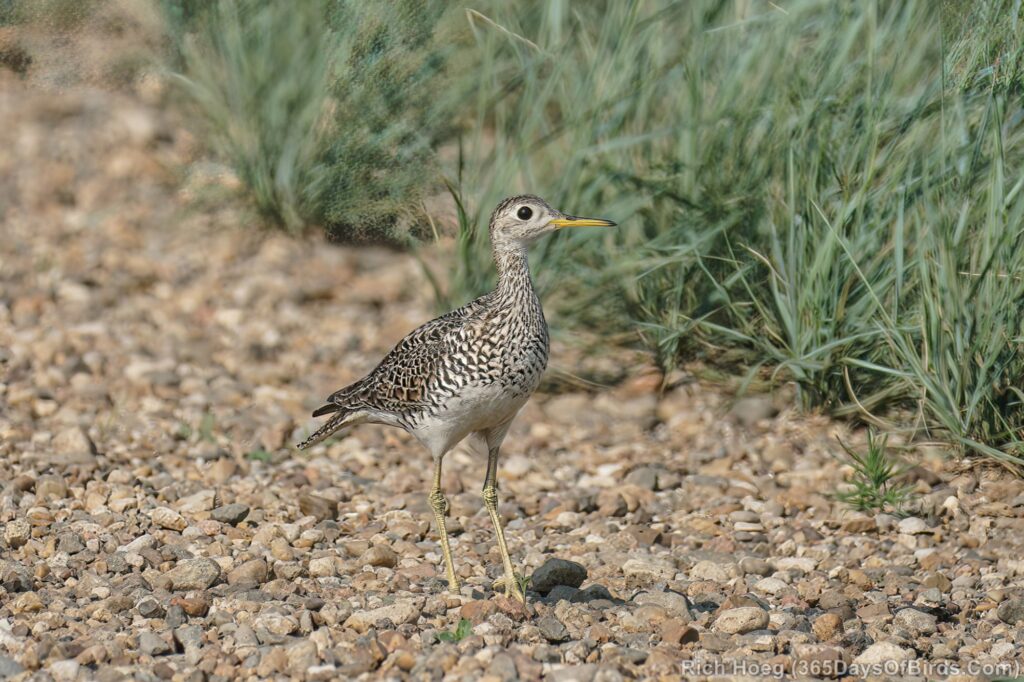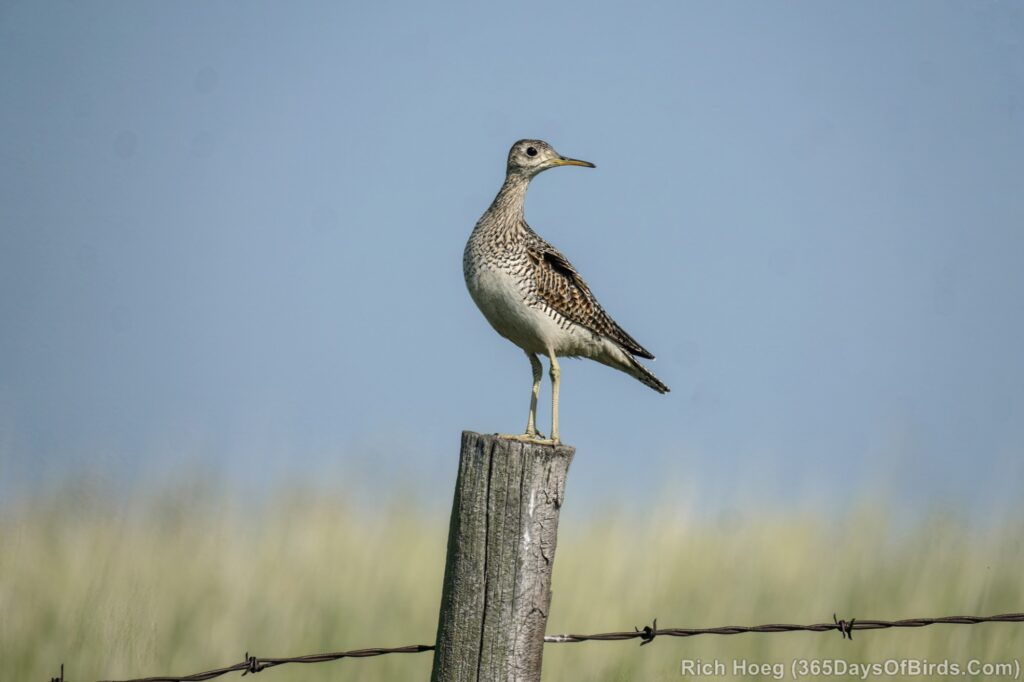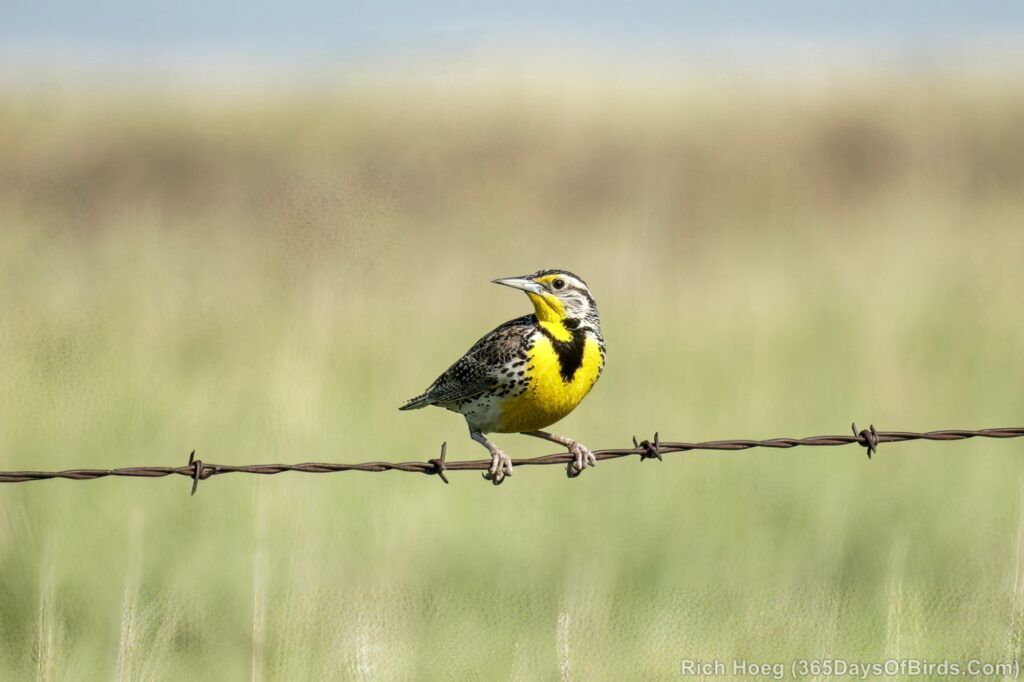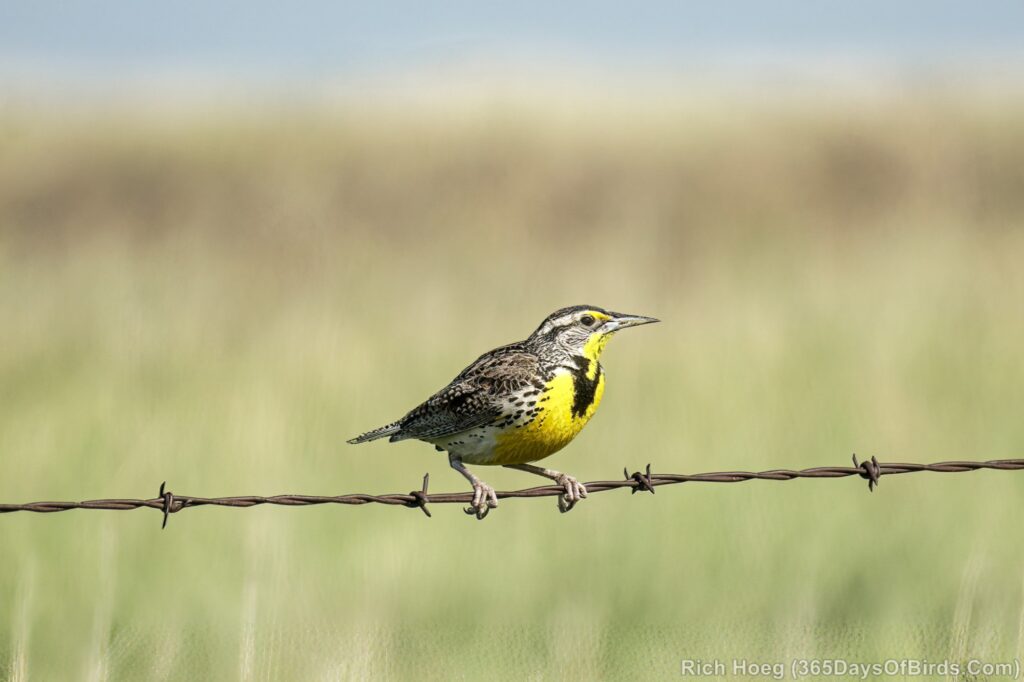Monday evening while watching various grassland birds, particularly Meadowlarks, Dickcissels and Upland Sandpipers, a lone Burrowing Owl couple horned in on my experience. Normally one finds Burrowing Owls at Prairie Dog towns within the Fort Pierre National Grasslands, but this love couple wanted to be different. For the next two evenings I would check up on my Burrowing Owls and say hello. I really enjoyed that these owls had a couple of dead shrub branches that they utilized for perches. This got the birds off the ground above their burrow entrance and made them easier to see.
Momma Owl’s role at this time of year (middle of June) is to sit still, conserve energy … let Poppa Owl feed her, and then lay eggs (learn more about Burrowing Owls via the Cornell School of Ornithology). Wednesday evening I was provided a fantastic treat. Poppa Owl flew in and provided a yummy meal for the female. Enjoy!!! I know I did! According to my camera image timestamps the visit lasted 12 minutes, but most of the dramatic action took place within a matter of seconds … followed by sitting and perching.
A final explanation … it is normal for raptors including owls for the female to perch near the planned nest and await the male to feed her. Creating eggs is hard, calorie intensive work. Thus, nature has many bird species prepare for nesting in this manner.
Awaiting Godot … Preening.
Poppa Owl Fly By!
Where Did He Go?
Food Delivery … Door Dash?!
That’s All She (actual he) Wrote!
Awaiting The Next Scrumptious Bug …
And a short video of Momma Burrowing Owl awaiting her next meal (video link for email subscribers)
